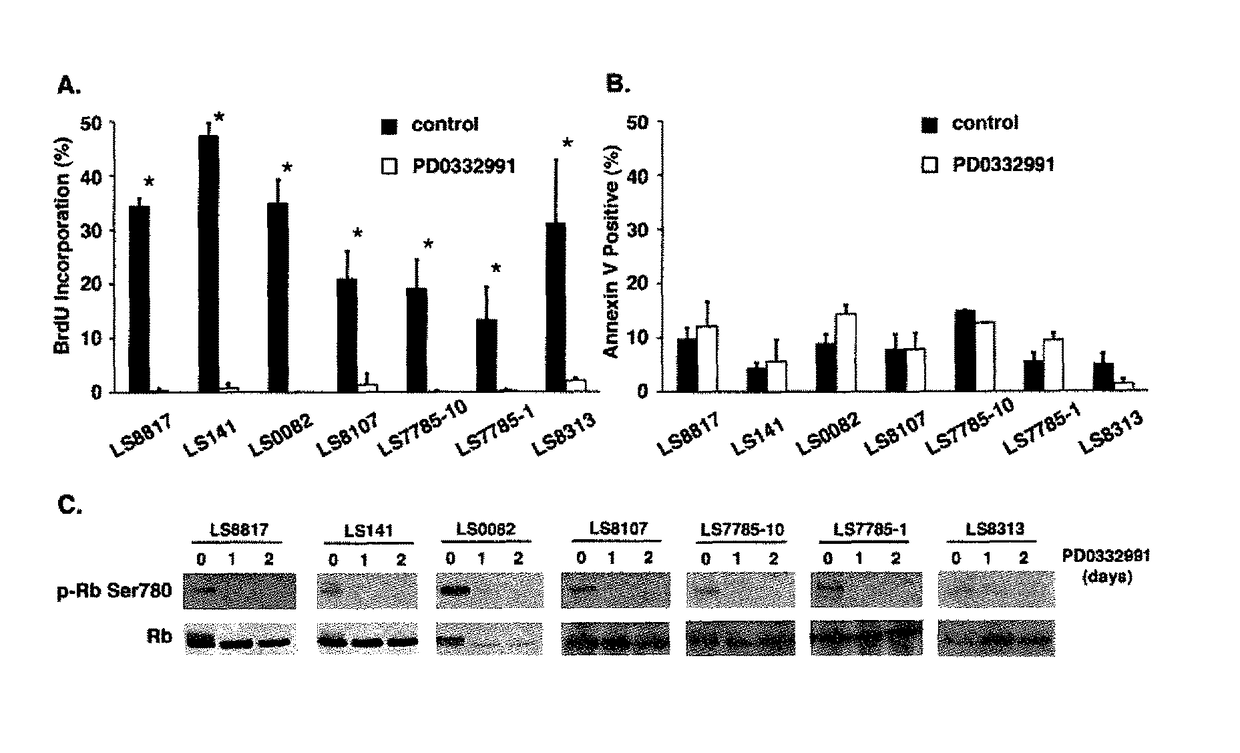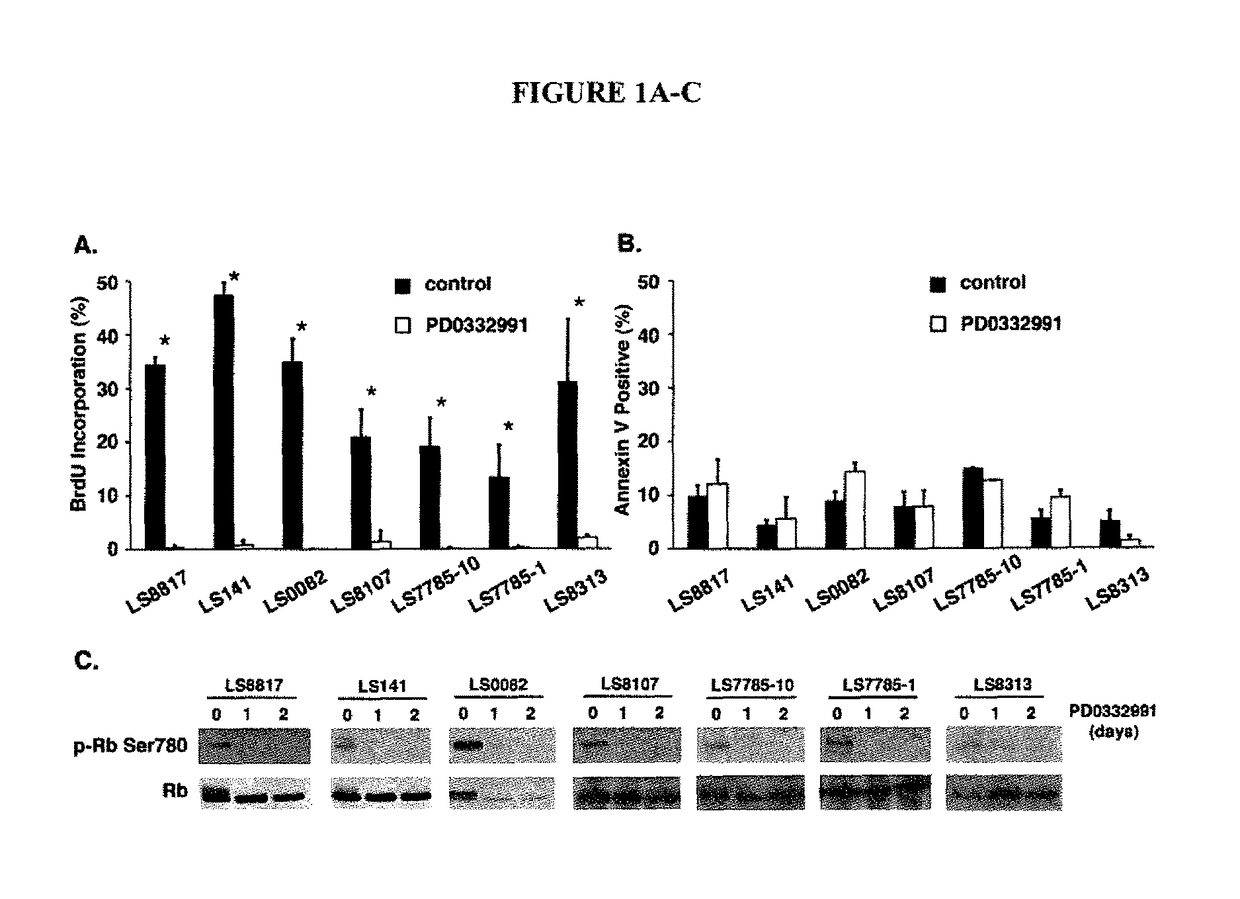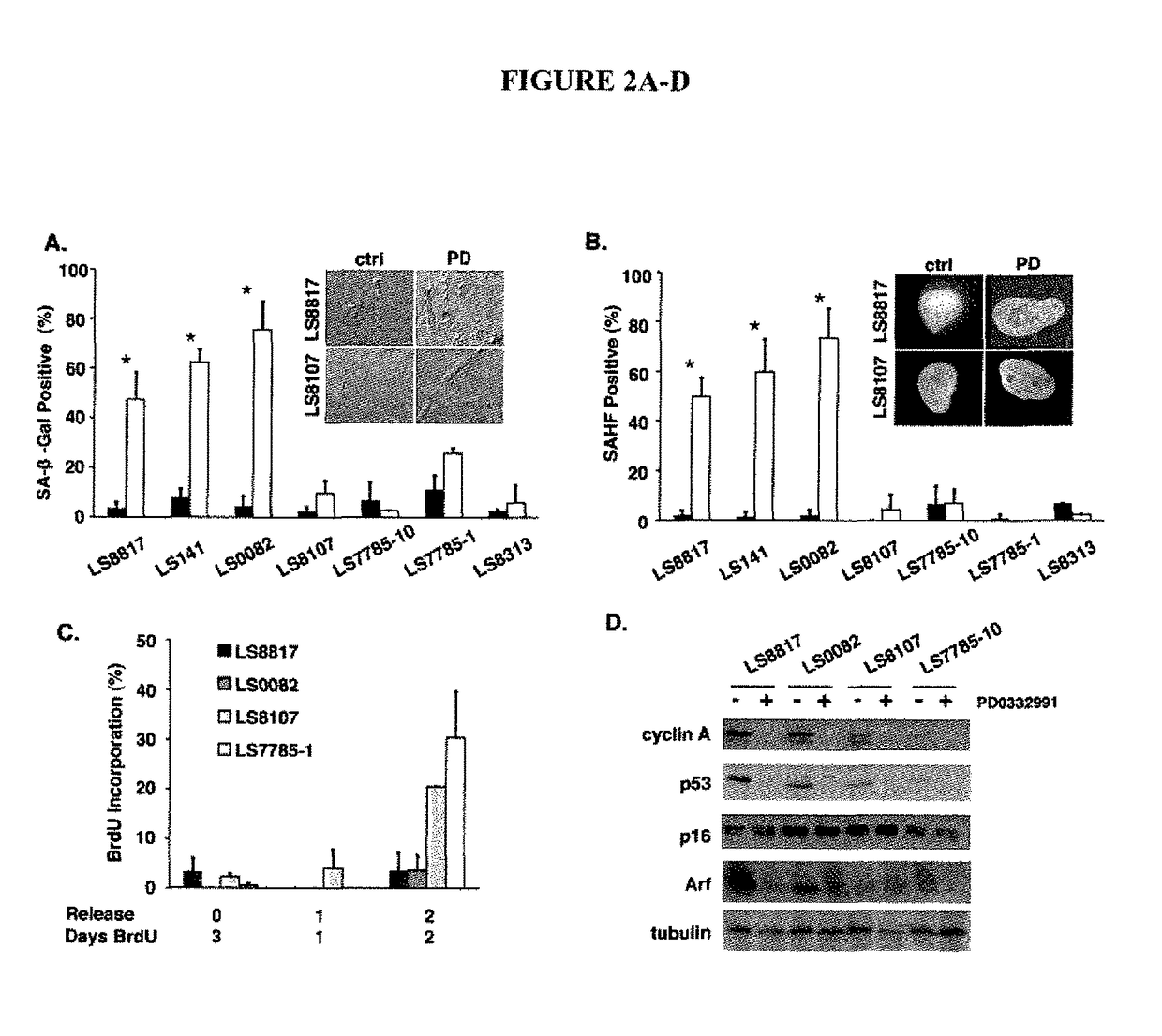Companion diagnostic for CDK4 inhibitors
a technology of companion diagnostic and inhibitor, which is applied in the direction of biochemistry apparatus and processes, instruments, drug compositions, etc., can solve problems such as problems in predicting the efficacy of these drugs on patient outcomes, and achieve the effect of reducing the level of mdm2 protein
- Summary
- Abstract
- Description
- Claims
- Application Information
AI Technical Summary
Benefits of technology
Problems solved by technology
Method used
Image
Examples
Embodiment Construction
[0036]For clarity and not by way of limitation the detailed description of the invention is divided into the following subsections:[0037](i) MDM2 as a biomarker;[0038](ii) CDK4 inhibitors;[0039](iii) cancer targets;[0040](iv) methods of use; and[0041](v) kits.
5.1 MDM2 as a Biomarker
[0042]Mouse double minute 2 is denoted MDM2 herein.
[0043]A subject may be human or a non-human subject. Non-limiting examples of non-human subjects include non-human primates, dogs, cats, mice, rats, guinea pigs, rabbits, pigs, fowl, horses, cows, goats, sheep, cetaceans, etc.
[0044]In certain non-limiting embodiments, a MDM2 biomarker may be a protein.
[0045]In a specific, non-limiting embodiment, a MDM2 protein may be a human MDM2 protein having the amino acid sequence as set forth in NCBI database accession no. NP_002383 (SEQ ID NO:1).
[0046]MDM2 nucleic acids and proteins for non-human species are known or can be determined according to methods known in the art, for example, where the sequence is the all...
PUM
| Property | Measurement | Unit |
|---|---|---|
| genomic heterogeneity | aaaaa | aaaaa |
| phase contrast micrographs | aaaaa | aaaaa |
| time | aaaaa | aaaaa |
Abstract
Description
Claims
Application Information
 Login to View More
Login to View More - R&D
- Intellectual Property
- Life Sciences
- Materials
- Tech Scout
- Unparalleled Data Quality
- Higher Quality Content
- 60% Fewer Hallucinations
Browse by: Latest US Patents, China's latest patents, Technical Efficacy Thesaurus, Application Domain, Technology Topic, Popular Technical Reports.
© 2025 PatSnap. All rights reserved.Legal|Privacy policy|Modern Slavery Act Transparency Statement|Sitemap|About US| Contact US: help@patsnap.com



